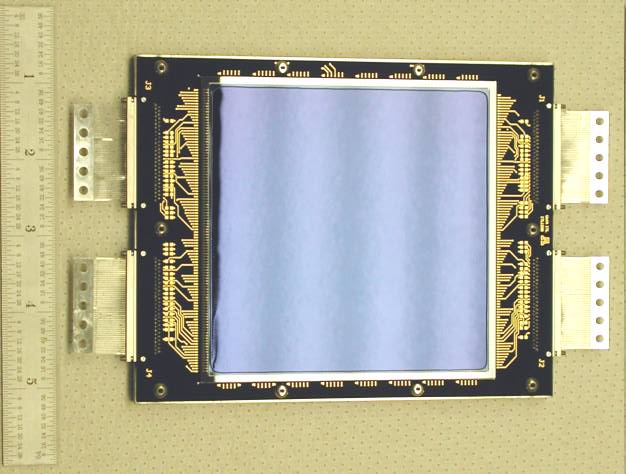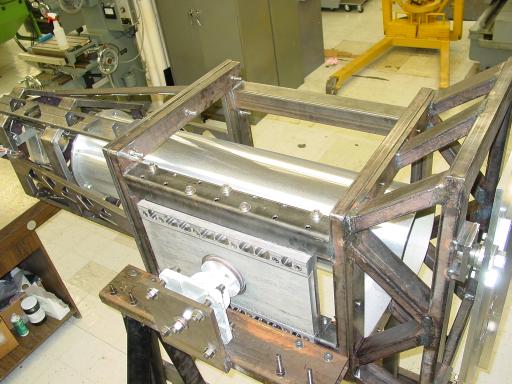Last update: 2008 Nov 14
this page is maintained by Norbert.Zacharias (at) usno.navy.mil
Introduction
Stars do move. The accurate measurement of the positions and motions (along the plane of the sky) of stars is one of the major tasks of the U.S. Naval Observatory (USNO) Astrometry Department (AD). This information is important for navigation, space situational awareness, solar system dynamics, and the study of our Milky Way galaxy.
In the past the sky was imaged on photographic plates taken by astrographs. An astrograph telescope is basically a big, high quality camera used in astrometry (the study of the positions and motions of celestial objects). To measure those astrograph plates the AD operates the StarScan machine at its Washington DC facility. Decade old photographs of the sky are important to derive the motions of the stars. The earlier the plates are taken the more apparent are the motions of the stars when compared to recent observations.
Electronic detectors, very similar to those found in commercial, digital cameras, are used today instead of photographic plates. USNO just completed the first electronic all-sky survey at optical wavelengths and is about to embark on an even more ambitious observing program beginning in 2009.


UCAC
Between 1998 and 2004, USNO completed the first ever electronic all-sky survey at optical wavelengths. A 16 megapixel charge-coupled device (CCD) was used at the USNO Twin astrograph. The resulting product is called the USNO CCD Astrograph Catalog (UCAC). The survey begun in the southern hemisphere with the telescope operated at the Cerro Tololo Interamerican Observatory(CTIO) in Chile. In 2001 the astrograph was relocated to the Naval Observatory Flagstaff Station (NOFS) to complete the northern hemisphere.First data were published in 2000 with the UCAC1 release, while the 2004 published UCAC2 data release contains over 40 million stars and is used heavily by the astronomical community throughout the world. It is the most accurate star catalog for stars in the about 10 to 16 magnitude range, extending the Hipparcos and Tycho-2 catalogs to many more stars, fulfilling the goal of the International Astronomical Union (IAU) working group on the densification of the optical reference frame. The UCAC3 release, expected in 2009, will be the conclusion of this project.

URAT
As a next step beyond the UCAC program, the USNO Robotic Astrometric Telescope (URAT) was designed by 2004. This is a dedicated, astrometric telescope of 0.85 meter aperture with a 4.5 degree diameter field of view. The primary mirror for this new telescope was obtained in 2007 but no funding is currently identified to complete this telescope.Detector development was sponsored by the Office of Naval Research (ONR) which lead to the successful development of the world largest, single CCD chip with over 111 million pixels (called the "10k" detector) by Semiconductor Technology Associates (STA).
In 2008 USNO funded the URAT focal plane instrument, the 4-shooter camera, which consists of 4 10k detectors and some smaller CCDs for guiding and focus control. Within about 2 years of observing this program will give not only positions and proper motions of the stars but also an estimate of their distances (parallaxes).


U-mouse = URAT phase 1
The first phase of the URAT program, nicknamed "U-mouse", will use the 4-shooter camera at the backend of the existing USNO astrograph "red lens". This is the exact same optics which previously was used for the UCAC program. However, a completely new tube assembly is being built in the USNO instrument shop to accommodate the big, heavy, new camera.A single exposure with this instrument will cover 28 square degrees of sky and a new all-sky survey is scheduled to begin in fall 2009. This time we begin with the northern hemisphere at Flagstaff. The new survey will go about 2 magnitudes deeper and will be more accurate than the UCAC observations due to improved detectors and a 20 fold increase in throughout allowing multiple sky coverages per year.
The URAT (U-mouse) program supplements the J-MAPS space mission by extending the J-MAPS reference frame to many more stars and fainter magnitudes and also supporting the extragalactic reference frame link of J-MAPS. The plan is to relocate the astrograph to CTIO in early 2012 to complete the all-sky survey and come out with a star catalog before the European Gaia mission.
